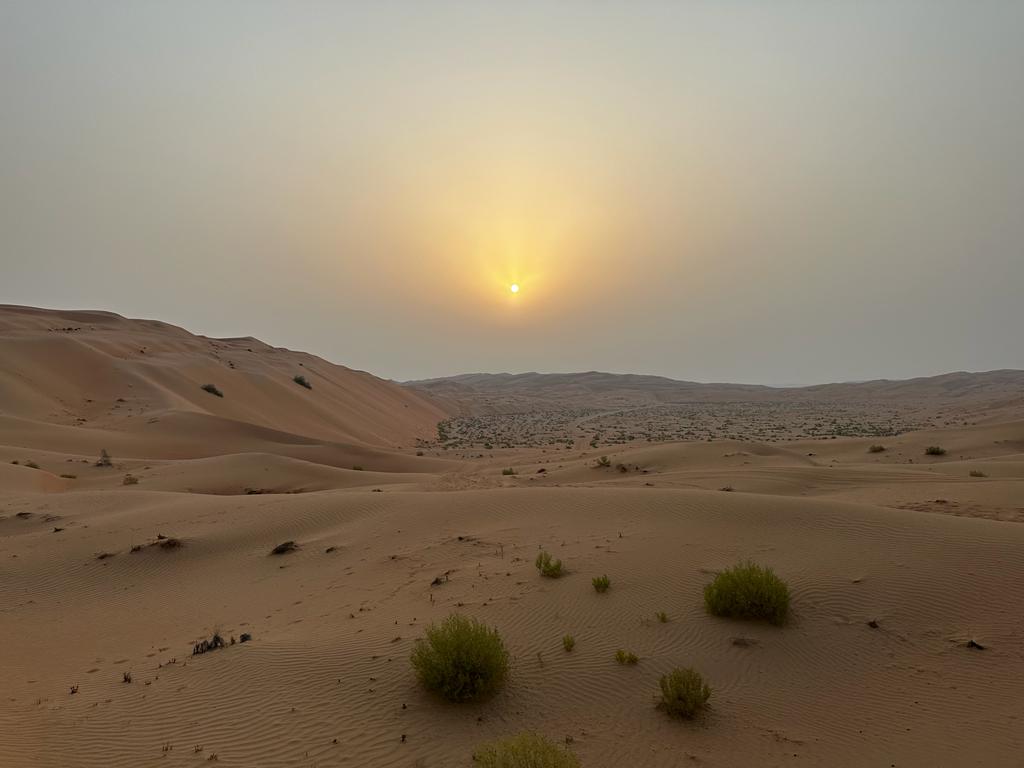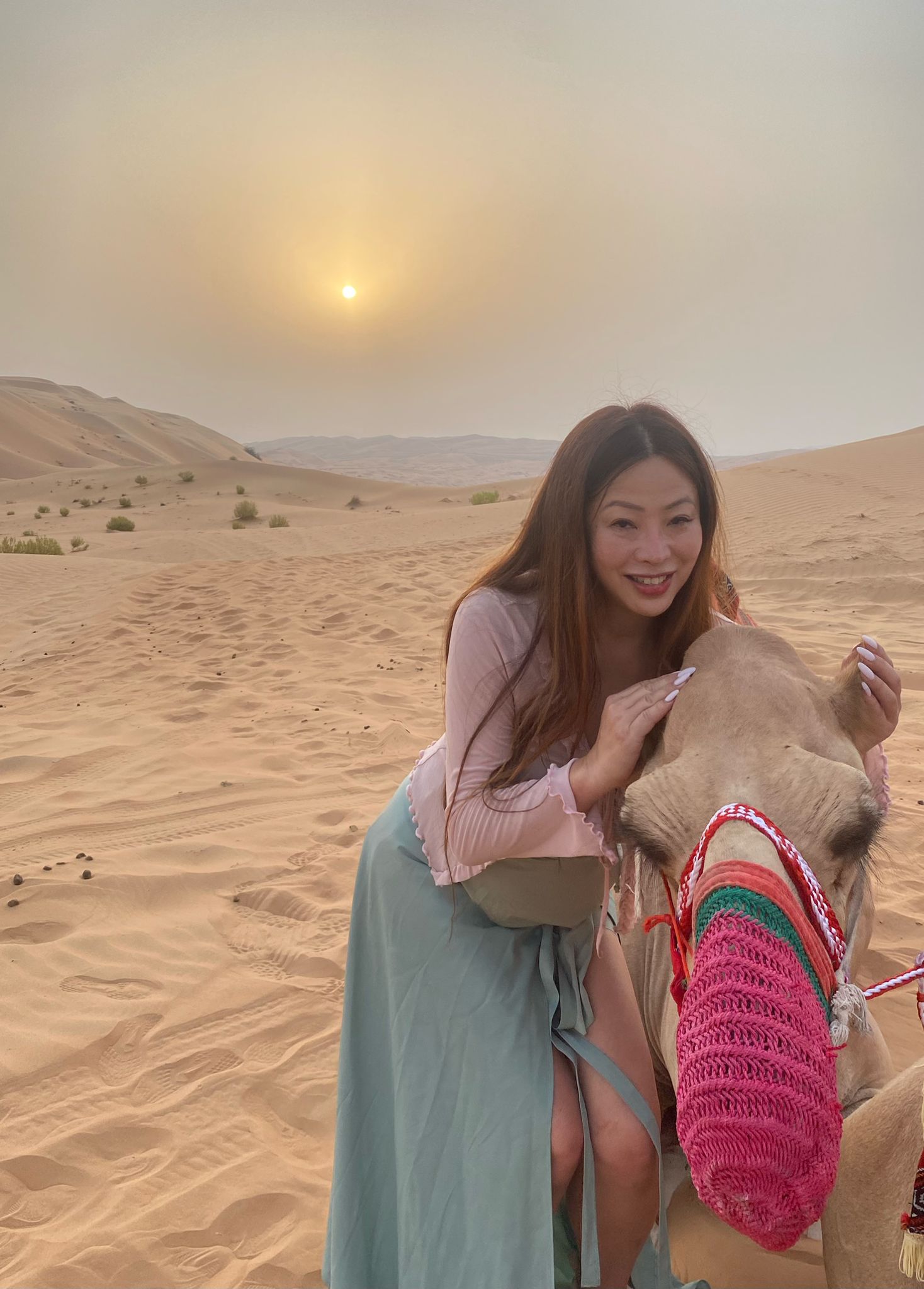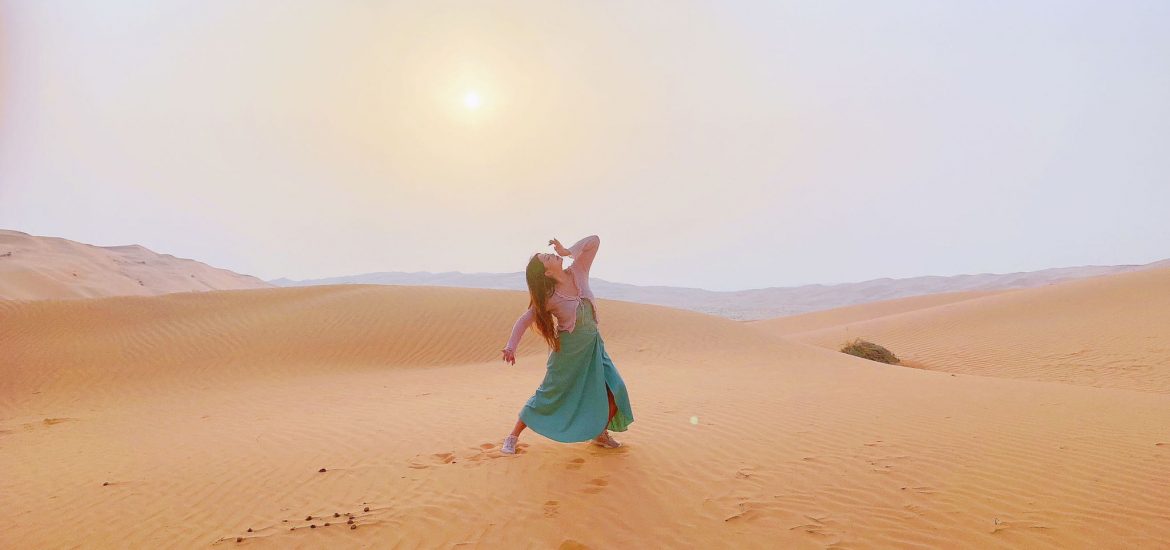The Desert
It is Guanyin’s day, the 5th of August. In the pocket of a vast desert, where Bedouins roam, camels clop, and the sun beams across 650,000 kilometers of ancient dunescapes, the feminine Avalokiteshvara, the lady of compassion, will meet the wild feminine embodiment of enlightenment, Vajrayogini.
The dance of the wild one awaits, Vajrayogini’s crimson body embracing the gentle red of the primordial sand.
The Liwa Oasis is the homeland of the Nahyan clan, the ruling family of what we know today as the United Arab Emirates (UAE). It is set at the edge of the Empty Quarter (Rub al-Jali), the largest contiguous sea of dunes in the world. These dunes, immortalized in popular consciousness by Frank Herbert’s novel of the same name (the 2021 film adaptation was also shot here), are old, old, old. They were formed at least 141,000 years ago, with the youngest being 18,000 years ago, at the turn of the last Ice Age.
The primeval setting of Al Dhafra, “where desert meets sea,” hearkens back to the beginnings of humanity itself. It is enveloped with spiritual power as much as baking heat. And the weather! It is as one would expect: overwhelming and somewhat unforgiving. There is a beauty in its harshness, like being burned up upon looking on the face of God. Perhaps it is the Bedouins, then, that are actually closest to the divine, women and men that have dwelled here for centuries.
Here, on Guanyin Day, a sky dancer weaves her body’s movements along the dunes’ contours.

The Dance
It is the early morning. “Falafel” is the name she has bestowed on her inquisitive and friendly camel companion, reflecting his adorable personality through his soulful eyes. As he rests after clopping among the watching dunes, she dismounts and prepares her spontaneous tribute to… everything.
The rising sun, its rays reaching forth to her like the hands of a Thousand-Armed Avalokiteshvara.
Her companion that records this special moment.
Vajrayogini herself, the mistress of the dance she is about to do.
Buddhist deity dance (charya nritya) is less about expressing “oneself” and more about channelling the deity through facial expressions, mudras, and physical movements. From a spiritual perspective, these movements are not one’s own, as Vajrayogini is herself the embodiment of emptiness (Shaw 1995, 358). And so artist-mystic Rebecca Wong, finding herself in the heart of the Liwa Oasis at sunrise, gazes at her audience, the star of our solar system, and welcomes its beaming rays on to her body and the curves of the dunes.
Then she enters into a light trance, twisting and unfurling her body into the Vajrayogini dance that was passed down to her by Prajwal Vajracharya.
Isadora Duncan (1877–1927) said: “Imagine, then, a dancer who, after long study, prayer, and inspiration, has attained such a degree of understanding that his body is simply the luminous manifestation of his soul; whose body dances in accordance with a music heard inwardly, in an expression of something out of another, a profounder world. This is the truly creative dancer, natural but not imitative, speaking in movement out of himself and out of something greater than all selves.”
This is what Rebecca does as the sunrise continues to ascend, as Ra’s rays of compassion and life curve across the world, celebrating the special day of Guanyin.

The Dakini
The visualization is to imagine [the syllable] a at the navel,
and the vital essence of all channels gather into a.
Meditate on a as unborn emptiness.
Do this three times with everything the same.
If heart-prana arises, imagine a within the heart
and focus the attention on its radiating light.
This will clear it up.
This instruction of the vajra dance is the instruction of the dakini of timeless awareness. Iti
Dharma. Desert. Dunes.
Duncan, Isadora.
Dakini.
“Listen to the music with your soul. Now, while you are listening, do you not feel an inner self awakening deep within you that it is by its strength that your head is lifted, that your arms are raised, that you are walking slowly toward the light?” In saying this, did Isaroda Duncan, an American woman who articulated the mystic expression of dance so thoroughly, have some kind of heart connection to the sky-dancers that embody the cosmic dance of Dharma?
Rebecca feels herself detached from the sand, from Falafel, from her surroundings as she channels the divine mudras and poses of Vajrayogini, embodying the formless emptiness that, through its realization and insight, brings prajna or wisdom and therefore enlightenment. Wisdom is, after all, Prajnaparamita, the feminine mother goddess of all. She meets Avalokiteshvara, the masculine embodiment of karuna, compassion, just as he expresses his feminine face in Guanyin, as she celebrates her day with the planets and with the artist-mystic dedicating a dance to her.
A dance, in the heart of the most sacred landscape one can imagine.
She, with her friendly camel companion, among the watching dunes.
She.
Sky-dancer.
Sunrise.

Dancing silhouettes of sand dunes
Overwhelm my senses
They entice my curiosity, my hope,
My heart.
A distant whisper across the eons,
Caressing my inner core.
I recognize this whisper’s voice.
“Hello, hello,” we greet each other,
“I have waited for you a long time.
“Welcome home.”
References
Sarah Harding. 2011. Niguma, Lady of Illusion. Ithaca, New York: Snow Lion.
Miranda Shaw. 1995. Passionate Enlightenment: Women in Tantric Buddhism. Princeton: Princeton University Press.
Related blog posts from BDG
Diamond in the Desert: The Dharma and the UAE’s House of Universal Truth
Diamond in the Desert: Buddhism in the United Arab Emirates
Rebecca Wong’s Dreamscapes of Art, Archetypes, and Ascension
Yongzheng’s Yuanmingyuan: The Dharma Dimensions of the Old Summer Palace


